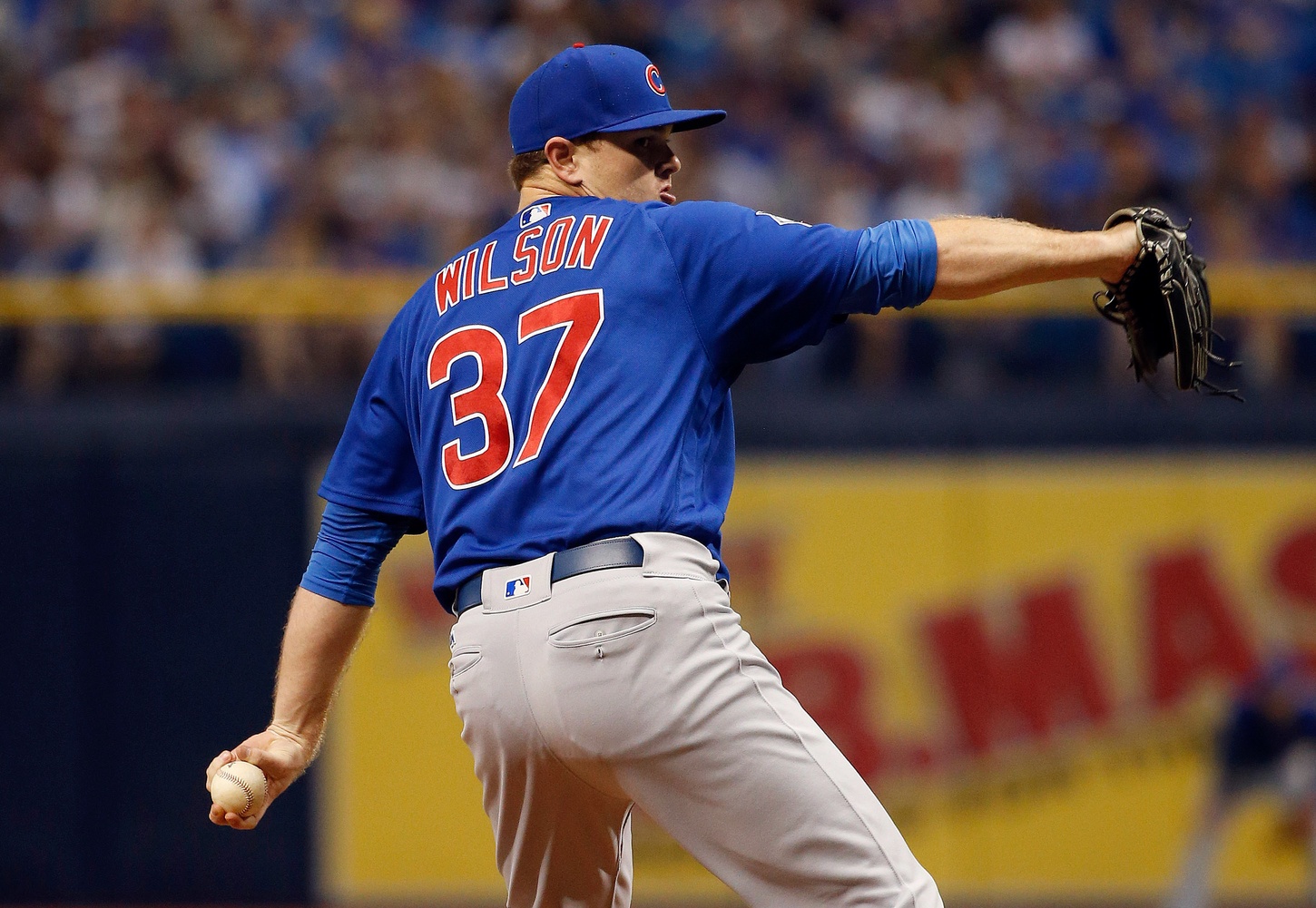Position: Left-handed Relief Pitcher
2017 Stats: 58.0 IP, 3.41 ERA/3.37 FIP/4.70 DRA, 90 cFIP, 12.4 K/9, 0.3 WARP
Year in Review: The above stat line actually tells you almost nothing about Justin Wilson’s 2017 season, which started with promise in Detroit and ended with struggles in Chicago. Here’s how the performances looked when broken out by team:
Detroit: 40.3 IP, 2.68 ERA/3.20 FIP/4.62 DRA, 93 cFIP, 12.3 K/9, 0.2 WARP
Chicago: 17.7 IP, 5.09 ERA/3.74 FIP/4.89 DRA, 83 cFIP, 12.8 K/9, 0.1 WARP
Based on his first-half results, Wilson really did look like the final piece to the Cubs’ bullpen: a dominant, hard-throwing lefty who could share the eighth inning duties with Carl Edwards Jr. The trade that brought him and Alex Avila to Chicago for Jeimer Candelario really did seem to fill the final holes on the roster for a postseason run. As we know, though, it did not work out that way for Wilson. What’s less clear, though, is what happened.
The first and most obvious issue Wilson had with the Cubs was a huge surge in his walk rate. He had only 16 walks in his 40 innings with Detroit this year, but he somehow racked up 19 over just 17 innings of work with the Cubs. It’s hard to pinpoint what happened besides some sort of change in approach and confidence, but no pitcher will do well when walking more than a batter per inning. In that light, a 5.09 ERA actually isn’t so bad. Wilson had never had a really significant issue with walks before; he had a 4.5 BB/9 rate in 2014 with the Pirates, but that had been his worst by far. This isn’t really something that the Cubs could have expected when making the trade.
But the Cubs also could’ve been more wary about the pitcher they were acquiring, even based on what he was doing in Detroit. Wilson had a career-low groundball rate of 38 percent with Detroit, which was coupled with an unsustainable BABIP against of .210. Batters were not hitting Wilson particularly hard exit-velocity wise, but this low groundball rate was not something that could sustainably work in the offensive environment of 2017, and sure enough that BABIP ballooned to .391 as soon as he went to the Cubs (in what was admittedly a very small sample). This meant that Wilson wasn’t able to pitch around his walks with any sort of effectiveness, and it made him basically unusable as the Cubs went into the playoffs.
Looking Ahead:
Still, though, the Cubs acquired Wilson not just for 2017, but also for 2018. And he’s been a very effective reliever in the past with each of Pittsburgh, New York, and Detroit. So there’s reason to think that a bounce-back is likely.
First, as I mentioned, Wilson’s ridiculous walk rate from the end of last year seems very unlikely to continue. He’s always walked some batters, but a reliever with the sort of stuff that Wilson has can get away with that in the majors. He has never really been as good as he appeared to be in Detroit last year, but he has been a left-handed reliever with an ERA in the low 3’s, and that’s super valuable out of the ‘pen. He has a track record of success, and he’s only 30; his stuff won’t leave him in the short term. He has a much stronger record than, for example, Brian Duensing did prior to 2017, and he could still prove to be a very valuable bullpen arm in 2018, especially against lefties.
What concerns me even more than the walks, though, is that ground ball rate. 38 percent isn’t going to cut it in the current offensive environment, and it’s simply too risky for a high-leverage reliever, even if hitters aren’t consistently making hard contact. I looked through Wilson’s Brooks Baseball metrics and wasn’t able to find any clear indicators of why this might have happened, but it’s something that he’ll have to figure out in 2018 if he wants to be a trusted option. His breaking ball velocity was down a bit towards the end of 2017, and his overall average pitch was perhaps a tiny bit higher in the strike zone than his career average, but any causes I can suggest are totally speculative. If Jim Hickey can work with Wilson to get his groundball rate back to near his career average of 50 percent, the Cubs could very well have another good bullpen option on their hands in 2018.
Lead photo courtesy Kim Klement—USA Today Sports
